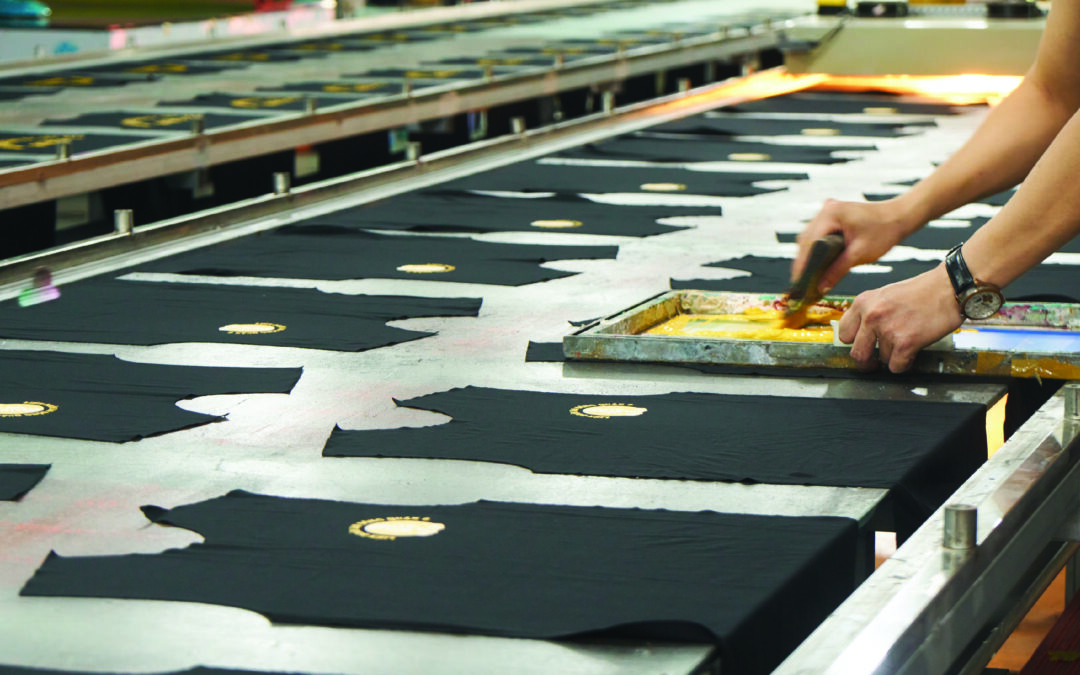
by threshold | Mar 15, 2022 | Creative, Design, General, Marketing, Thought Leadership
As a real estate marketing agency based in Austin, we know how fun it can be to work with new developments in Austin. We know the Austin vibe. We know the districts and street names and how an Austinite would talk about them. We know what kinds of apartments and amenities and common in the market because we’ve searched for apartments in Austin ourselves. We have insider knowledge and insider passion about the Austin market. It can streamline the discovery process and inspire us to do excellent work in collaboration with our clients.
But do you want to hear a secret? Sometimes a local marketing agency isn’t the best pick. In fact, you can typically get the same quality of work—if not sometimes better—from a marketing agency partner outside the local market.
There are multiple reasons for this and they all come back to trade-offs. Yes, when you hire a local marketing agency, you’re likely getting certain advantages due to first-hand knowledge of the area. However, you’re also likely to suffer a variety of disadvantages affecting everything from pricing to the quality of work and the speed of your lease-up.
Wondering if a local marketing agency is right for your new development project? Let’s discuss some of the reasons why a local real estate marketing agency may not be your best pick. Along the way, you’ll also get crucial insights into what you should look for in a marketing partner when choosing between local and remote options.
Market Research Trumps Local Know-How
First-hand knowledge is an asset, there’s no denying it. But thorough market research is ultimately more important when it comes to making strategic marketing decisions. Local marketing agencies sometimes cut out the market research and discovery step entirely, believing they already know all they need to know to succeed in the market. Nine times out of ten, this is a huge mistake.
Market research and discovery is indispensable because it remains objective. When we have first-hand experience of something, we often feel we have the full picture, but really the picture is only as complete as our limited subjective view can make it. As a real estate marketing agency in Austin, we have many Austinites on our team, but not one of them has the complete picture of Austin demographics, rent rates, competitors, brand trends, local history, or current events without looking some things up. That’s why market research is so important. All these factors influence the success of new housing developments in Austin, especially due to the highly competitive nature of the housing market.

If you are considering a local real estate marketing partner, be sure to ask about their market research and discovery process first. Their answer could illuminate just how objective their process is and how deep they’ll dig to find the inspiration for out-of-the-box marketing strategies that will help you stand out from the crowd. Speaking of standing out…
Fresh Perspectives Create Innovative Outcomes
If marketers aren’t careful, we can easily rehash the same ideas time and time again. It’s only natural when we work on many projects that have similar goals and similar audiences. Out-of-the-box thinking doesn’t come naturally; it takes commitment and collaboration to pursue truly innovative ideas that stand out from the market.
The risk of in-the-box thinking is that much higher when working in a market that you are intimately familiar with. While you may have an advantage when it comes to ideas that resonate with your local market, you also have blinders on due to the natural inclination to focus on what’s familiar. It’s called confirmation bias; our brains tend to gravitate toward what coheres with our existing beliefs and experiences and ignore what doesn’t fit. This bias can be that much harder to overcome when we are so immersed in the familiarity of our own local market.
On the flipside, an outside perspective can provide a more reliable and efficient route to innovative ideas. From your brand’s look and feel to print marketing strategies to how you build your website, a non-local marketing partner may have the broader perspective and variety of experience that helps push you and your team out of your comfort zone and into marketing strategies that stand out from the crowd to drive buzz, loyalty, and leases.

If you’re considering working with a local agency, be sure to ask for examples of past work. This will help you assess how much range they have and their capacity for innovation within your local market. If their work samples all have a similar look and feel, that should be a red flag. It may also help to ask specifically about the most innovative project they have worked on so you can immediately get a sense of their potential for out-of-the-box ideas.
Local Agencies Have Fewer Resources
Because local marketing agencies tend to be smaller boutique agencies, they may or may not have the same resources that you’d find at an agency serving multiple markets. This is true in some areas more than others. For example, a local agency may have contacts with all the local printing vendors, but fewer digital marketing resources like a CTV marketing platform or a Google Premier Partnership.
Even when a local agency has plenty of local contacts to leverage for all your new development’s real estate marketing needs, you may not be getting the biggest bang for your buck. This is simply because local vendors tend to have local networks with fewer options overall, meaning they are less equipped to shop around and ensure a low rate in order to pass the savings along to you. An agency that serves markets across the country (or even across the globe) is likely to have a broader network of options as well as time-saving and cost-saving resources that allow them to promise more affordable rates. For example, at Threshold we have an established network of print vendors, audience databases, digital marketing partners, and more that we leverage to provide seamless outcomes for our clients while keeping costs low.
If you are considering working with a local real estate marketing agency, be sure to ask about not just their pricing but also their network of vendors for print and environmental graphics, digital marketing campaigns, videography and photography, video editing, and anything else your new development may need to establish great brand awareness and an accelerated lease-up.

by threshold | Feb 8, 2022 | Creative, Design, Marketing
In the age of digital-first marketing, traditional marketing strategies sometimes become an afterthought for real estate brands. But even if a prospect’s connection with your brand begins in the digital realm, the physical realm is where it reaches its fullest form, and savvy real estate marketers are always looking for ways to bridge that gap.
Branded promotional items are one great way to connect with prospects and residents beyond the digital sphere. Whether it’s branded apparel displaying your community logo or a handy multitool featuring your community tagline, branded swag helps you make a lasting impression that residents and prospects can literally take with them as they consider where to live or whether to renew their lease.
But not all swag is created equal. In fact, most of us in our time have received some branded trinket or other gift that we found completely useless and immediately threw in the trash. How do you ensure your marketing dollars are well spent on promo that makes an impact rather than being wasted on empty gestures that go unappreciated? The following tips can help you use swag to maximum effect, earning more attention, loyalty, leases, and renewals.
Surprise & Delight With Unique Branded Items
Everyone offers T-shirts, mugs, and magnets, so try standing out from the competition with something uniquely tailored to your community. While these standbys are popular for their universal appeal and cost-effective pricing, sometimes you’ll make a bigger impact by offering something unexpected.
Consider including something that your audience will use often, whether at your community or in the surrounding neighborhood. For example, if your community is located somewhere hot, consider branded sunglasses or even sunshades for their car windshield. Or if you’re located near great golf courses, consider a branded cap clip and ball marker combo. If your community features a lot of pet-friendly amenities, a branded pet bandana or chew toy could be the perfect touch. Think about what your key differentiators are and what your audience is likely to actually use and appreciate.
Go All Out on a Giveaway Prize
There are lots of ways to run a giveaway that encourages new leases, renewals, referrals, or social engagement from residents and prospects. Branded giveaways give you the opportunity to splurge on swag that is truly special without spending all your marketing dollars trying to include everyone.
Branded messenger bags, coolers and camping gear, travel bags and tags, laptop sleeves, portable chargers, bluetooth headphones, and other items on the pricier side can become great swag for a lucky giveaway winner.
Plus, giveaways are great opportunities for social media content. Remind prospects and/or residents about giveaway deadlines and generate buzz by posting about it on your social media accounts, then showcase your winner by posing for a picture with them when they pick up their prize (with their permission, of course). You might even choose to incorporate social engagement into the giveaway rules, requiring people to share, tag, follow, or comment in order to be entered for a chance to win.
Turn New Residents Into Brand Advocates With Welcome Packages
A welcome kit with branded swag is the perfect way to wow new residents and make them feel at home in their new apartment. Marketing shouldn’t end when the lease is signed, after all. Delivering an excellent move-in experience helps turn new residents into natural brand advocates, leading them to share their experience with others in person and online. That means you get word-of-mouth marketing, a great online reputation, and maybe even direct referrals that contribute to higher occupancy rates. Of course, happy residents are more likely to renew their lease as well, and retaining residents is far more cost-effective than what you’ll spend on getting new leads in the door.

A little thoughtfulness can go a long way when putting together your welcome package. Consider what someone would enjoy receiving as a housewarming gift. It could be magnets for the fridge, a nice set of coasters, or a mug. It could even include a customized 12-month calendar featuring photos from the community (and the resident’s move-in date marked on it, for bonus points, plus any upcoming community events you may have planned). Including something for their pet too, if they’re moving in with one, can sometimes be the most heartwarming option of all! Pet toys, bandanas, bag dispensers, brushes, and food and water bowls can all be customized with your branding and included in your welcome kit.
Support a Worthy Cause Your Residents Care About
Branded swag can provide unique ways to showcase what’s important to your brand and demonstrate to prospects that you share their values. For example, a branded compost bin or plantable postcards with wildflower seeds can demonstrate your support for sustainability goals like reducing waste and supporting local bee populations. Branded reusable shopping bags and reusable straws (made of metal or bamboo) are also good options.

Start by doing some research on the causes that are important to your target audience, be it sustainability, supporting local artists, animal rights, education, or other causes. Some causes are more challenging than others to show your support for through branded swag, but this can also become useful inspiration for future resident events and partnerships with local organizations.
Boost Brand Awareness With Swag for Employees
Residents and prospects are typically the first priority when it comes to swag, but don’t forget that employees can be your best brand advocates! Giving your employees branded apparel can be a great way to boost brand awareness in your community, especially when worn at events like housing fairs, grand openings, or bring-a-friend resident events.

Plus, the more you reward your management and maintenance staff, the better your resident experience will typically become. That’s because employees who feel appreciated are more passionate about the communities they serve and better equipped to create positive resident experiences that lead to great online reviews and referrals. Plus, their interactions with prospects will be marked by genuine enthusiasm that becomes infectious, leading more prospects to begin an application.

by threshold | Jan 25, 2022 | Creative, Design, General, Marketing, Thought Leadership
 Written by Kathy Jones, Agency Operations Manager
Written by Kathy Jones, Agency Operations Manager
With an ever changing real estate industry, developing a real estate marketing plan informed by strategic thinking is absolutely essential to be able to stand out from your competitors. When it comes to your print marketing strategy, you may feel that your number one goal is to create the perfect flyer or brochure that your team can distribute in high traffic areas. However, what happens next when the prospect receives and reads the flyer is oftentimes an afterthought. In reality, it takes careful consideration of the full leasing/sales journey to create print assets that really make an impact on your prospects.
While COVID-19 brought a large decrease in the number of prospects touring leasing offices and sales centers in person, that number is quickly on the rise again and so is print marketing. Since the real estate industry is quickly changing, your strategic plan should also be changing. Your vision will likely remain the same but your goals should be frequently reviewed. For most clients to the real estate industry, the enduring vision is to impact your bottom line (e.g. improving occupancy rates or increasing revenue), but you can’t get there unless you set more specific, granular goals along the way. For example, one goal might be to increase the number of leases or sales contracts that are signed each month. In order for you to achieve that goal, you need to build a hand-crafted strategy that will push prospects into your leasing office or sales center to close the deal.

Every community is different. One might have a great location where others might have strong brand awareness in their market. If your community is located in a great location, guerilla marketing can be a great supplement to your existing digital marketing. But what happens once your prospect receives your flyer? The prospect will likely view your website and head into your leasing office or sales center for a tour.
Furthermore, your strategic plan shouldn’t end once the prospect walks through the door. A well thought out tour is your next step. In what order should property information be presented to your prospect? In most cases, this is the order of operations that yields the best results:
- Property overview
- Apartment amenities
- Community amenities
- Property location
- Floor plan types
This gives prospects the ability to get to know your property and hopefully be wowed by amenities so they’re already picturing themselves living in your community and exploring the local neighborhood by the time you get down to the specifics of floor plan options. This makes many prospects eager to lock down a specific floor plan as you broach this subject with them during your tour.

Leasing offices and sales centers are likely your last chance to wow your prospect and can make or break your prospect’s likelihood of signing a lease. You may have a well thought out strategy to get them in the office and a tour strategy that piques their interest, but what is really going to make you stand out from the crowd? Creating an experience that will resonate is key, so environmental graphics within your leasing/sales center are important factors in sealing the deal. Living green walls, Instagram walls with neon signs, or custom corkboards where you can add photos of prospects signing are all unique ways to achieve that wow factor. If you stay on top of trends, you won’t be surprised. In fact, you’ll be far ahead of others because you’ll have had years to strategize and adapt, so that when disruption hits, you not only have a plan, but are already implementing it.

by threshold | Jan 20, 2022 | Creative, Design, Marketing
It’s safe to say that Senior Living has had a hard time lately. With new variants of COVID-19 still disrupting normal life, especially for the particularly vulnerable, senior living has seen fewer residents moving in and fewer stakeholders investing their dollars. Still, occupancy rates are once again on the rise as we begin 2022, having rebounded promisingly in Q3 and Q4 of 2021 according to reports by NIC. Now that the industry is approaching some semblance of its previous stability, what new trends will emerge as new developments and rebrands hit the market? These five emerging senior living branding trends are setting the tone for senior living marketers in 2022, and we can’t wait to see which trends make the biggest impact on the industry as the year goes on.
Health & Safety Are More Central Than Ever
Of course, the pandemic is far from over, and potential residents are still prioritizing health and safety in their housing decisions. Senior living brands are responding with messaging that highlights the health and safety of their communities, with amenities like on-site COVID vaccination and higher staffing ratios featured front and center on home pages and brochures.
In addition to messaging updates, new brands and rebranded communities are also gravitating toward names that signal reliability and health along with logos that signal wellness and stability. In many cases, this is simply a doubling down on themes that already dominated the senior living space, with natural motifs like trees, lakes, and mountains having long since become ubiquitous in the senior living market. Some developments, however, are looking for fresh takes on the themes of health and safety in order to establish themselves as modern yet still reliable. In these cases, similar symbolism is incorporated, but in novel, less on-the-nose ways. Instead of names like “Terrace Grove” and “Sagewood” you might find more names like “Wellstead” and “Aegis.”
Digital-First Strategies Extend into Branding Claims
With senior living marketing teams now prioritizing digital tactics like virtual tours, digital brochures, and video advertising, the digital-first approach to real estate marketing has finally taken root in the senior living market. But it’s not just the tactics themselves that are getting digitized. These digital-first approaches are extending into brand identities as senior living communities seek to establish themselves as great places to stay connected and live life to the fullest.

Even more than before, residents are coming to rely on digital forms of connection with family and friends, so having tech amenities like high-speed internet is a must. In fact, health needs and digital needs are intertwined more than ever, with telemedicine becoming an important resource for some seniors and video calls becoming central to maintaining the social connections that are crucial for mental health. The importance of the digital sphere within senior living communities is being reflected more and more in branding, with new brands boasting their modern technical side in addition to the traditional human care side.
The Borders of “Senior Living” Are Excluding “Active Adult”
Although some lump Active Adult housing and senior living together under the same umbrella, Active Adult is quickly becoming its own separate entity. In many cases, Active Adult communities share more in common with their multifamily counterparts than they do with traditional senior living communities offering Independent Living, Assisted Living, and/or Memory Care.

While there is some overlap in the needs of residents in Active Adult housing compared to Independent Living, more and more Active Adult communities are specifically using “Active Adult” and not using “Senior Living” in their branding and marketing. This effort to differentiate took on added importance during the pandemic as Active Adult communities catering to adults 55 and over sought to distance themselves from senior living communities that were dealing with COVID outbreaks and negative press coverage.
Market Consolidation Is Leading To More Umbrella Branding
With senior living brands facing a more uncertain market than before the pandemic, market consolidation has accelerated in recent years. That’s because the big fish in senior living tend to be the best equipped to adapt to the rising challenges presented by COVID. For example, these top senior living management companies, owners, and developers are able to create mutually advantageous partnerships with Medicare and other Health Care programs. Meanwhile, the smaller fish are struggling to keep up with increasing staffing demands and so on, sometimes leading them to sell existing communities or halt new development projects.
Among the “big fish” of senior housing are umbrella brands like Atria Senior Living, Brookdale, and Five Star Senior Living, each having dozens of communities across the United States. Communities managed by umbrella brands like these tend to use the same branding as their parent company from top to bottom—name, logo, colors, messaging, etc.—but others may take select elements of the umbrella brand like logo and colors but achieve added individuality by incorporating slight variations on logomarks and other branded elements in addition to selecting a unique name for each property.
“Luxury” Brands Are On The Rise
The senior living industry is beginning to bounce back and investors are ready to get back in the game, which means we could see a wave of new developments breaking ground in 2022. Those that have emerged within the last few years are reminiscent of luxury multifamily properties when it comes to their branding. Phrases like “resort-style” and “five-star,” which have long been buzzwords in the multifamily vertical, are now making their way into senior living websites and brochures too. Active Living communities may have helped spur on this shift, bridging the conceptual gap between luxury multifamily brands and the senior living industry. As active adults are coming to expect more from their housing communities, so are seniors and their family members looking for Independent Living, Assisted Living, and Memory Care.

by threshold | Dec 7, 2021 | Design, Digital Marketing, Marketing, Tech/Web, Thought Leadership
If you’re a property manager looking to get a real estate website up and running quickly, you may be asking yourself whether an apartment website template is the way to go. But while the industry’s leading template providers seem like an attractive solution for some apartment brands, they often present more difficulties than they solve, turning short-term expediency into long-term headaches.
People use real estate website templates because they expect them to be the easy solution. In fact, many of these template providers are also Property Management Software providers, which is appealing to property managers because it has the potential to save time and effort when integrating their PMS and their website. It’s also affordable for most budgets because it’s a one-size-fits-all approach. By relying on a template instead of a fully custom site, property managers save money for their properties. Sounds pretty sweet, right?
Unfortunately, this picture perfect scenario often fails to materialize. Where leading template providers offered to save time and effort, they often deliver further challenges and sub-par results down the road, requiring further intervention from property managers to address these challenges. Here are some of the common issues we and our clients have noticed when working with the leading real estate website template providers.
Strict Templates Make You Blend In With The Crowd
Most apartment website templates are easy to spot a mile away. That’s because most templates are built for quantity, not quality. In other words, template providers want their templates to be applicable to a wide variety of housing brands, which tends to strip away a significant amount of visual character and functionality that might clash with a subset of brands.

The result is a look and feel that is very generic, with limited flexibility to showcase your specific branding elements and key differentiators. This is especially disadvantageous if your community is part of a competitive housing market and/or offers a lot of unique amenities and features that could earn you more attention, if only you were able to show them off more easily. Instead, with hundreds of other property sites out there using the same real estate website templates, by the time your prospects find your site, there’s a good chance they’ve already run into multiple lookalike apartment websites during their housing search. That means their first impression of your community is that it’s just like all the rest. Not exactly conversion-inspiring.
You might think this is an issue with all templated apartment websites, but not all templates are made equal. In fact, many templates offer more customization options so you can showcase your brand colors, patterns, voice, and key differentiators more prominently while still keeping costs low. Some real estate website experts also combine a templated approach with the assistance of professional web designers and developers to help you fully adapt a template to suit your needs, which could suit some brands better than the bare bones approach that most templates provide. Full disclosure: Threshold is one such real estate website provider, but we’re not the only option out there delivering this hybrid approach to real estate website design. Even if you work with another real estate marketing agency, we highly recommend this hybrid approach to launching a templated apartment website.
Not All Integrations Are Made Equal
While some leading template providers offer integrations with their own property management software and basic Google Analytics without too much trouble, integrating with other software can present surprising amounts of difficulty. This can be a problem when it comes to implementing a diverse ad mix, tracking digital marketing results, and identifying optimization opportunities.
For example, while some website template providers list dozens of available integrations with leading property management software, Internet Listing Services, analytics providers, collections and billing, marketing platforms, resident screening providers, and more, the truth is that many of these integrations are complicated and fickle, requiring a savvy web developer to decode and troubleshoot. And if you’re considering a templated website, it’s probably because you wanted to keep things simple and easy rather than needing the assistance of an expert in web development for apartments.
Plus, many desired integrations are missing, including leading third-party chatbots and CRM software. This means that the average templated website may be a poor choice for teams wanting a cutting-edge web experience with the modern touch that consumers have come to expect.

“Set It And Forget It” Leads To Poor UX
Typically speaking, property managers who opt for templated apartment websites are looking to simplify their life and avoid a lot of messing around with the website backend. For these folks, the ideal that they envision might be to get the real estate website design project out of the way so that they can focus on other things and not have to worry about the website again. Sounds nice, right?
Unfortunately, this “set it and forget it” approach often leads to poor UX when it comes to apartment websites. Templates may offer a quick way to get a basic website up and running, but this short-term advantage can pale in comparison to the long-term reality of real estate website maintenance. Amenity photos, external links, and specials info soon become outdated. Integrations break, leaving ugly and confusing elements on the your website—or worse, incoming leads fall through the cracks instead of being converted into new leases. In many ways, this isn’t a unique failing of templates, it’s just a reality of website management that property managers should be aware of while forming expectations and launching a website.
In the end, “set it and forget it” never lasts as long as you hoped, because before long, you’re forced to make site updates to ensure that your website continues to provide a quality user experience that inspires confidence in your prospects and delivers all the information and functionality they need to actually convert. So the goal you aim for in your apartment website should never be to “set it and forget it.” Someone will always need to be responsible periodically for ensuring the website is continuously optimized, or at least in proper working order. With this in mind, it may be well worth your effort to opt for a more hands-on approach from the very beginning, rather than locking yourself into a template that limits your capabilities and presents challenges for the web developer(s) you work with.

by threshold | Nov 18, 2021 | Creative, Design, Marketing, Tech/Web, Thought Leadership
 Written by Heather Ford, Senior Designer & Web Developer
Written by Heather Ford, Senior Designer & Web Developer
People love a good story. It’s been scientifically proven that when humans hear a story that they like, it can increase their levels of oxytocin, the ‘feel good’ hormone that boosts feelings of happiness, empathy and trust. Savvy marketers have been capitalizing on this for ages, creating engaging stories for brands that resonate with people and, ultimately, persuade them to open their wallets. (Super Bowl ads, anyone?) Storytelling works in marketing because, beyond the brain hormones, it gives people a way to relate to your brand on a human level. And in the digital world we live in, this has never been more important.
While print and especially video media seem the obvious choice for this sort of humanized communication, there is another, maybe counterintuitive, area that property developers and managers can take advantage of storytelling’s powerful ability to sway the hearts of their potential tenants: their real estate website.

All good design uses color, shape, flow, imagery and copy to craft a story. Beyond these things, you can consider the common ‘three-act’ structure that many stories use when laying out the structure of a webpage:
Act 1: The Set Up. This is where your audience is introduced to the main idea of the web page they are looking at. It’s the hook that makes them keep reading, so an apartment webpage hero should be visually interesting and clear in its messaging. Act 1 in a story is also when an inciting incident happens, or a thing that drives further action. In the case of web design, this can be a strong, punchy call to action.

Act 2: The Action. This is where the bulk of the plot, or in the case of property websites the detailed information, occurs. Any text or content-heavy sections of your web page, like exhaustive lists of features and finishes, should go in the middle. Once the viewer has been introduced to the main idea of the page they are on, they can decide they want the information that is below the hero section.

Act 3: The Resolution. If you’re feeling super fancy, you can also call this the ‘denouement’. At the end of your webpage, don’t just let your content fizzle out. People have made it all the way to the bottom; they deserve a satisfying conclusion to the story. Use this as an opportunity to outline how your property solves a common pain-point for renters, or create a sense of urgency and provide a clear next-step for your users, like “Apply Now!”

A single page on your property website can encompass an entire story, or a piece (a chapter, let’s call it) in an overall story you are trying to tell about your brand. Given the way people interact with web pages, scrolling is just like page flipping. Rather than jumping randomly from page-to-page, users progress through information as a linear sequence. Because of this, a story on a website has to unfold vertically, and not in small chunks that have no visual connection between them. Unlike books, there are many ways websites can enhance this to their advantage, such as:
- Using animation. Animation on a website can be used to enhance people’s attention toward important plot points (useful information, promotions, or CTAs) and shift their attention from one place to the next, allowing you to control the flow of the story.
- Stories within stories. Embedded, interactive elements and social feeds can be used to strengthen user engagement. These are natural storytelling mediums that have been proven to improve SEO because Google knows they enhance the user experience.
- Parallax scrolling. This technique allows for interesting transitions from one section on a webpage to the next and can be combined with well-crafted illustrations and diagrams to create strong storytelling.
- Video content. Good stories use what is called “indirect characterization,” which means showing rather than explicitly telling the audience something about a character. Video content is a powerful way this can be used in apartment marketing websites. You can say that you are a family-friendly property, or you can display a video hero that shows children playing and family-friendly amenities which says the same thing—if not more—to your viewers.
Storytelling in web design is much more than words and brand voice. While these are definitely important elements, it is the unique opportunities that the digital platform offers that can really enhance a real estate brand’s story and turn a really mundane experience into a compelling one that will keep your viewers at the edge of their seat.
Sources:
1 – Speaker–listener neural coupling underlies successful communication
2 – 5 Storytelling Techniques Applied to Web Design
3 – How To Start Your Story: Story Structures









 Written by Kathy Jones, Agency Operations Manager
Written by Kathy Jones, Agency Operations Manager







 Written by Heather Ford, Senior Designer & Web Developer
Written by Heather Ford, Senior Designer & Web Developer


